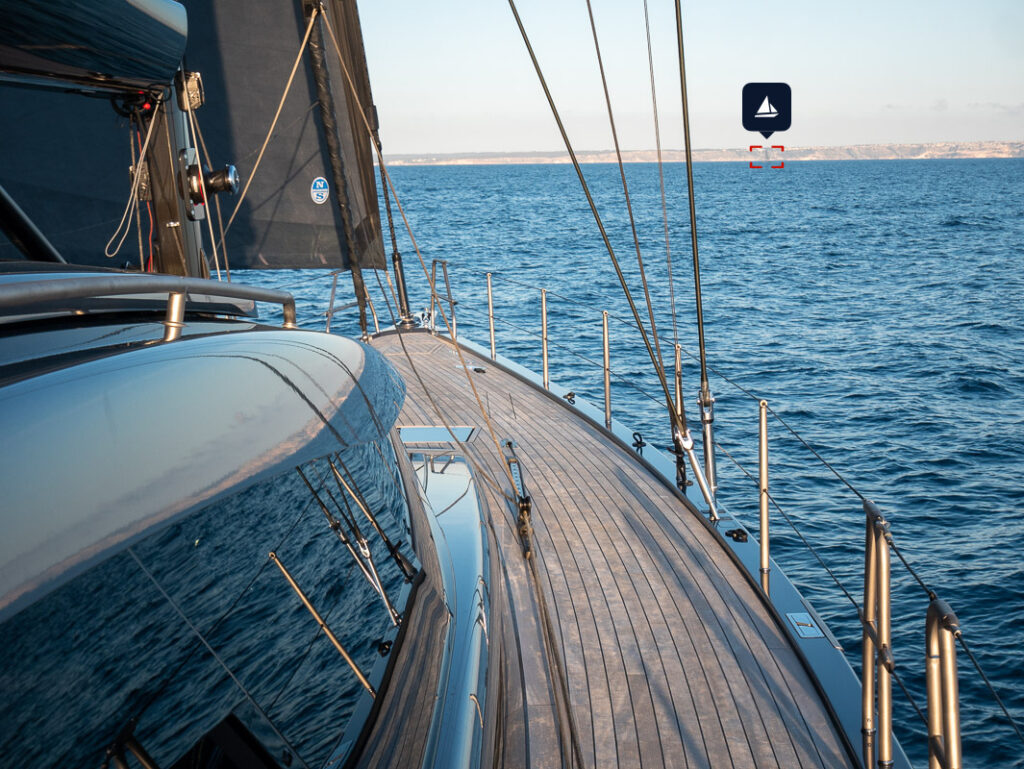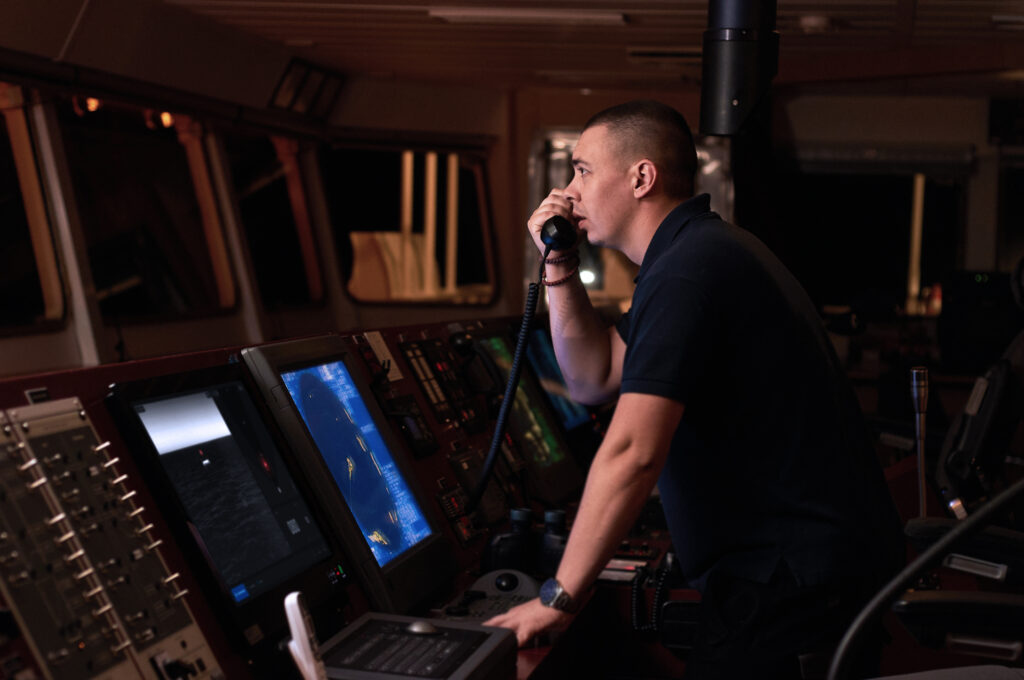Boat Radar Systems: A Modicum of Relief
Home » Boat Radar Systems: A Modicum of Relief
A collision with a large partially submerged object figures high on the oceanic racer’s list of fears. Never more so than today when we have grown almost blasé about racing along at more than 30 knots…at night.
Transforming Safety at Sea Beyond Boat Radar Systems
“Game changer” is a phrase used far too often. New developments and refinements can indeed change the game in offshore sailing, pushing the limits in performance to new heights. Yet rarely is there a new product that approaches an ongoing problem in such a fundamentally new way that it rises to be truly worthy of this term. It’s a pleasure to describe herein the SEA.AI boat radar systems because for offshore sailors this is a revolution in imaging that will not only boost performance but likely save lives as well.
SEA.AI is the world’s first optical-based system that can not only identify the range and bearing to targets in front of the vessel, but also, through its Artificial Intelligence (AI) software, develop the cognitive ability to recognise what these targets are as well. This is a critical leap forward in helping navigators to decide how to take urgent evasive action if needed, based on the nature of the target.
Targets can run the full range of potential collision hazards like logs, buoys, containers, icebergs, other vessels and whales. More than just calculating whether a collision is imminent, the AI software in the SEA.AI system helps sort through the options of what the object may be, to then understand what action to take.
The image-recognition technology built into SEA.AI can be used not just for avoidance but to track objects too. If there is a crew overboard, a liferaft or some other object in need of rescue, SEA.AI can be of great value in helping track and retrieve that target. In most circumstances radar and AIS cannot provide the same resolution to find the object, much less help to identify what it is.

How does SEA.AI work?
SEA.AI utilizes advanced cameras, including high-resolution low-light and thermal cameras with temperature detection accuracy of 0.05°C. Real-time learning of water surface patterns helps identify anomalies using a neural network with a vast database of over five million annotated marine objects. Regular over-the-air updates enhance machine learning and introduce new features.
The user-friendly SEA.AI interface, accessible via the app on smartphones, tablets, or onboard computers, employs augmented reality and map views. It displays targets to scale, providing information on range, bearing, and speed. An intelligent alarm system identifies potential collision threats based on relative speed and course changes.
The UI offers different settings for daylight and nighttime backdrops, as well as coastal or offshore use. SEA.AI’s capabilities vary by model; the Offshore line includes Offshore One, Offshore 320, and Offshore 640, each equipped with three cameras and a rugged AI processing unit. Differences among models include detection angles, frequency, and thermal camera resolution. All units weigh 990g at the masthead.


Are there limitations?
SEA.AI is more informative and versatile than AIS and radar in most circumstances of use. The versatility of use in UI/UX is superior and the power levels required for both vision and processing units is only 25W for the 320 and 640 units.
However, while SEA.AI can “see” at night and low light environments more than three times better than the human eye in these conditions, its performance will degrade in fog and rain. Here radar is a useful tool, thus with SEA.AI it is a complementary system that can offer different benefits and limitations.
Installation of SEA.AI optical units at the masthead is easy, with two shielded cables needed for each: the Offshore units are 109g/m in cable weight while the Competition units are 104g/m. This seems amazing even on the most weight-conscious rigs: for less than a four kilo-weight impact on the spar the boat can have a safety feature aboard that may save the life of the boat and the crew.
Try to imagine how many offshore races that ended in collisions could have had vastly more favorable outcomes had SEA.AI been deployed. Maybe this is why 19 of 37 Imoca 60s and four of eight teams in the Ultime fleet have committed to SEA.AI in the 2022 Route du Rhum.
While sailing off the coast of Africa Samantha Davies wrote to the race director of the last Transat Jacques Vabre: “SEA.AI alerted me to several very small boats that I could hardly see under the spinnaker, behind the waves, one of which was right in our path. I took the helm in time to avoid the collision. We luffed after I changed course, but the worst was avoided. Thanks SEA.AI.”
Article written in collaboration with Dobbs Davis/SeaHorse Magazine.
Related articles
SEA.AI at the Congressional Boating Caucus
SEA.AI demonstrated its machine vision at the Congressional Boating Caucus briefing on April 11, 2024, in Washington, D.C..
April 11, 2024
Baltic Yachts Sets Sail with SEA.AI’s Machine Vision Technology
Baltic Yachts, a Pioneering Shipyard, integrates SEA.AI Machine Vision Technology to its Range of Innovative Options
February 21, 2024
SEA.AI Machine Vision in Detecting the Unseen
SEA.AI detects and classifies objects, including those that escape conventional systems such as Radar or AIS. The addition of SEA.AI systems enhance maritime situational awareness, acting as a formidable ally to the capabilities of these established technologies.
February 1, 2024


